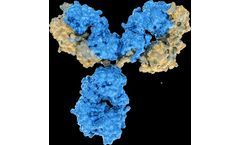Hematologic Malignancies Articles & Analysis
12 articles found
This immunotherapy has shown remarkable success, particularly in hematologic malignancies such as acute lymphoblastic leukemia and certain types of lymphoma. ...
This dual analysis enables a more nuanced understanding of tumor biology and facilitates personalized medicine approaches. In hematological malignancies, ImmunoFISH has become an essential tool. It allows for the simultaneous detection of gene rearrangements and the expression of corresponding proteins, helping in the characterization of specific subtypes of ...
ESMO updated its recommendations for NGS in advanced cancers this year, urging broader use of NGS in additional cancer types and the inclusion of tumor-agnostic biomarkers. The ESMO Precision Medicine Working Group (PMWG) first published its recommendations for when to use next-generation sequencing (NGS) in routine practice for patients with metastatic cancers in 20201. At that time, based ...
Antibodies are relatively effective for hematologic malignancies. For solid tumors, using small-sized antibodies (such as single-domain antibodies or scFv) and peptide-conjugated radiopharmaceuticals has become a prominent direction in research and development due to their small size and excellent tissue penetration capabilities. ...
TSLP and cancer New functions of TSLP have been discovered in the induction and progression of various tumors, including solid tumors such as breast, colon, and pancreatic cancers, as well as hematological malignancies like B-cell acute lymphoblastic leukemia (B-ALL). ...
At present, 15 ADCs have been approved globally for hematological malignancies and solid tumors. In addition, more than 100 ADC drug candidates are currently under clinical investigation. ...
The advent of immunotherapies for cancer, and more recently of cellular immunotherapies, has substantially altered the treatment landscape. In hematological malignancies, complete response rates to CAR-T cells can exceed 80%. ...
However, the impact on solid tumors has been far below the expectations set in hematologic malignancies, largely due to the immunosuppressive nature of the tumor microenvironment. ...
PTGDS is involved in various cellular processes including solid tumorigenesis, but its role in tumorigenesis is paradoxical, and the significance of PTGDS in hematologic malignancies is not clear. The aim of this new study was to investigate the expression and function of PTGDS in diffuse large b-cell lymphoma (DLBCL), especially the potential role of PTGDS ...
In addition, a small number of malignant tumors can also synthesize and secrete S-amylase. P-amylase is mainly secreted by the pancreas and has certain specificity for the diagnosis of pancreatic diseases. ...
Bispecific antibodies that target tumors by engaging innate-like T cell subsets with inherent antitumor activity Bispecific antibodies that target tumors by engaging innate-like T cell subsets with inherent antitumor activity CD1d can be expressed by several hematologic malignancies Bispecific Vγ9Vδ2-T cell engager Unique ability to also ...
Cancer patients frequently experience local and systemic symptoms causally related to their malignancy. Local symptoms are due to direct complications of the primary tumor or metastases and can include pain, neurological deficits, respiratory symptoms (cough, shortness of breath, hemoptysis) and obstruction (bowel, biliary, airway). Systemic complications include cachexia, ...












